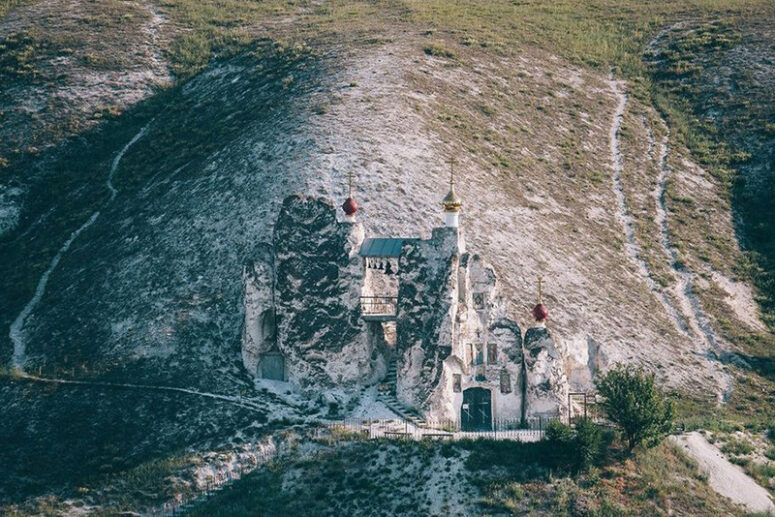
Kiev and Pskov Caves Lavras are known throughout the Orthodox world. However, few people know that there are other cave churches and monasteries still functioning in the Russian lands. This article is dedicared to one of these places, “a corner of rocky Cappadocia” located in the south of Russia, namely in the Voronezh region. The history and appearance of the Spassky Caves Convent in Kostomarovo is truly incredible.
Caves and Christians
Natural and artificial caves have been of great importance in the life of Christians since the first centuries. In the beginning of the Christian era, the Savior chose a cave as the place of His birth. Then, in the era of persecution, underground structures became for the ancient Christians places of meetings, worship and burial of the dead. With the development of monasticism and reclusion, holy ascetics chose hard-to-reach rocky niches in deserts and mountains as places of dwelling and ascetic deeds. In places where the soil or rock was soft enough, they deepened their cells. As communities developed, separate cells became connected by passages, forming cave monasteries. The largest of the caves usually became a church, used for common prayer.
Russian Cave Churches
According to popular belief, the ancient asceticism of the first Christians and the need to hide from persecution in different periods of history influenced the appearance of cave structures in Russian lands. Researchers believe that persecuted ascetics and missionary monks could have founded cave churches in the south of Russia. Possibly, this happened as early as during the era of iconoclasm, i. e. in the 8th-9th centuries. This would explain the extraordinary similarity of chalk underground monasteries of the Voronezh region with the ancient cave structures of Cappadocia, the largest spiritual center of the Christian East in the first millennium. The central and largest space in such caves is occupied by a church. Its high vaulted ceilings are supported by massive chalk columns. Uniform cells and tombs branch out in different directions from the church.
Starting from the 10th century, the southern Russian lands were constantly attacked and devastated by various nomads, eventually leading these lands into desolation. However, in the 17-18 centuries an active construction of fortress cities began, forming a defensive force against Tatar raids.
At that time, the caves of the Voronezh region were first mentioned in written sources, opening the era of active cave digging, which lasted until the end of the 19th century. Notably, the first dwellers of these caves were not monastics, but simple peasant believers. For example, Maria Sherstyukova spent twenty years digging caves in Divnogorye (Voronezh region) starting from 1796. The restoration of the church in the chalk mountain of Kostomarovo was also carried out by ordinary peasants.
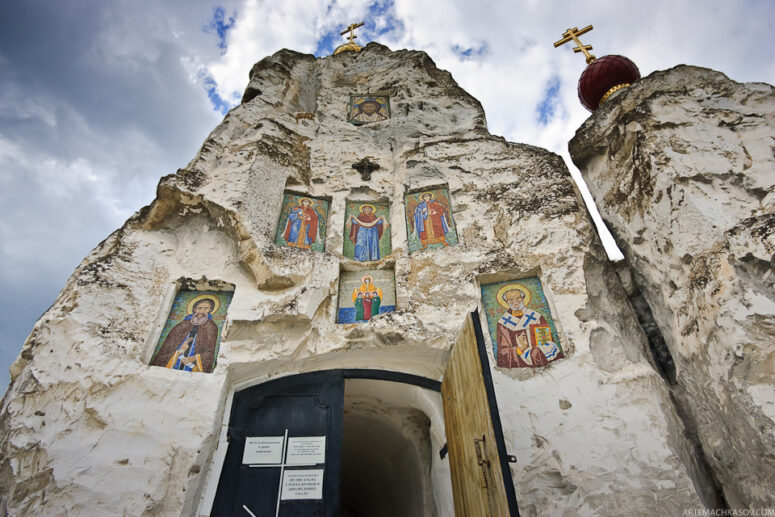
Spassky Сonvent in Kostomarovo
In 1908, local Christians began sending petitions to the Synod to consecrate the cave church, but for a long time they were refused. The ruling bishop did not find grounds for this for several reasons. There was no written evidence of the previous existence of a monastery in that place. Besides, the durability of these caves (by that time already slightly damaged) was not credible.
Kostomarovo cave church was consecrated in honor of the Savior Not Made by Hands as late as in 1946 during the period of persecution under Soviet rule, when other cave monasteries in the Voronezh region were already closed.

However, by that time certain followers of Christ had already lived there secretly. The most famous of them is the blessed elder Peter Eremeenko. He had many spiritual gifts and foresaw the name of his successor. After the opening of the church and the formation of the community, a new ascetic appeared here – a former front-line soldier, holy fool Andrei Popov.
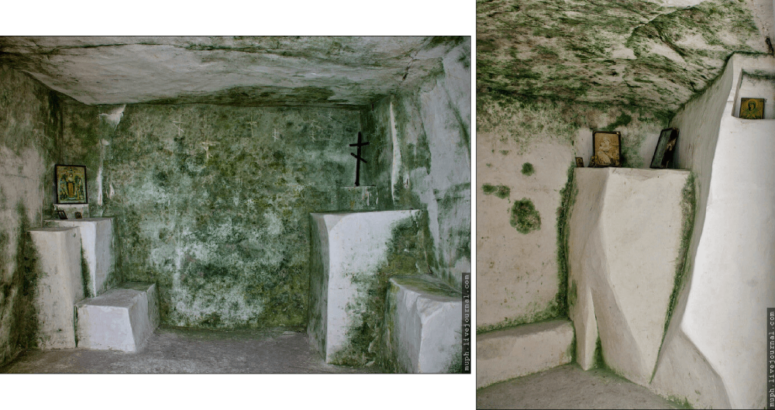
Andrei and his followers were secretly expanding the cave church. Soon a chapel was created here in honor of the holy martyrs Vera, Nadezhda, Lyubov and their mother Sophia.
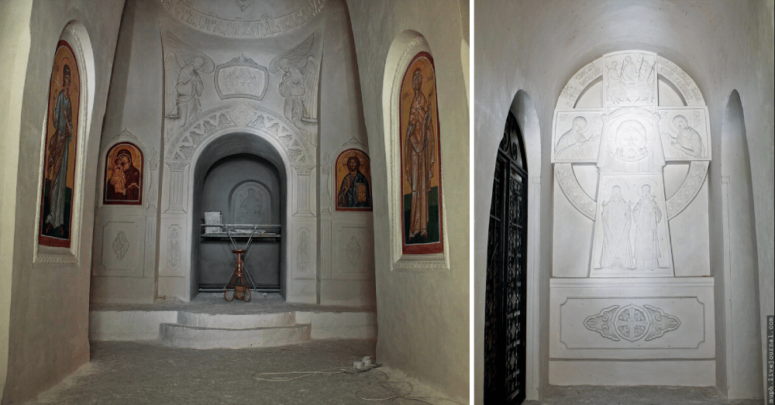
In 1959, the Kostomarovo Convent was closed. For the following few decades, the caves were abandoned. During this time, the walls became completely blackened from the soot of torches and covered with inscriptions scrabbled by random visitors.
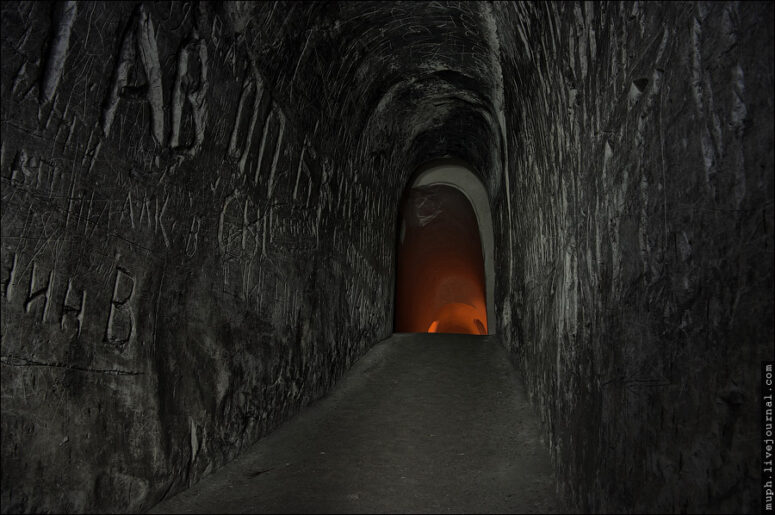
In 1993 the restoration of the cave church complex began. In 1997 the Spassky Convent was opened.
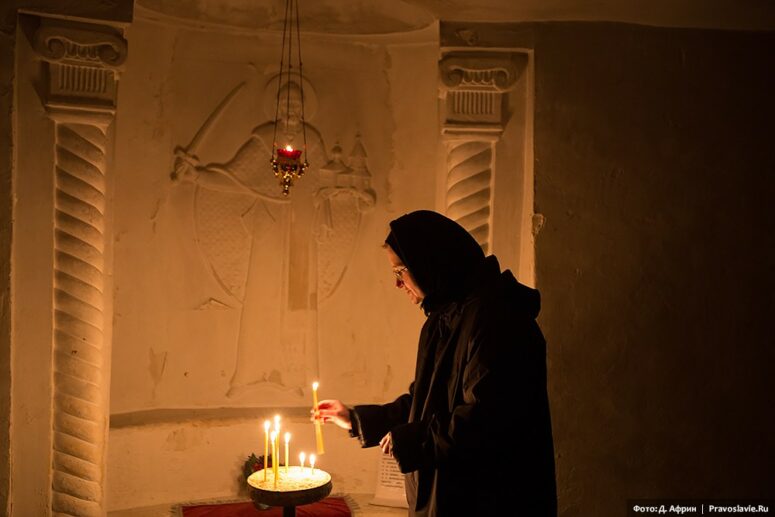
At the same time, the Convent was then presented with a full-length Valaam icon of the Mother of God, painted at the end of the 19th century. During the years of atheism, the image was shot through with six bullets, whose traces have survived to this day. This miraculous icon is the Convent’s main relic.
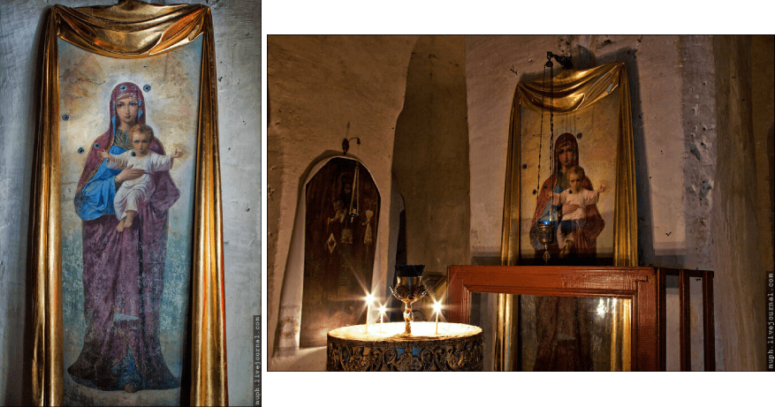
Besides the Church of the Savior, there are other remarkable cave objects in the Convent. One of them is the church in honor of St Seraphim of Sarov, founded in 1903, but completed only in the 1990s.
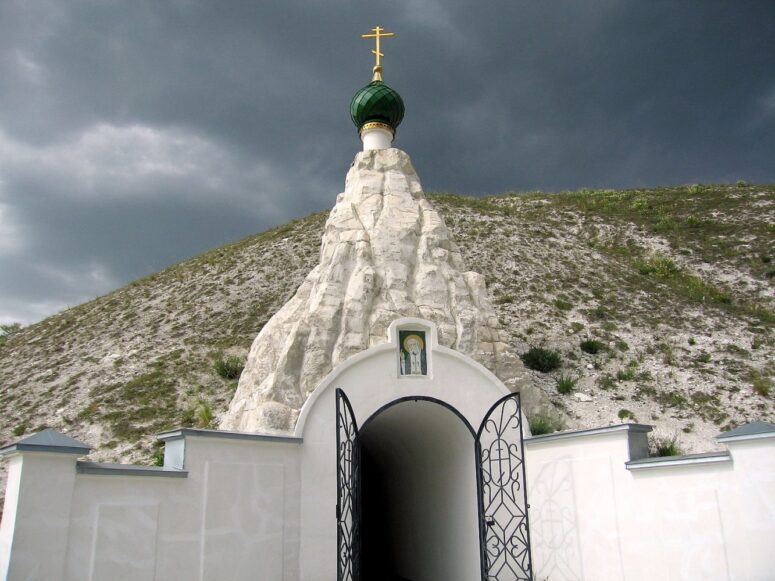
As it is the case in the main church, there are many carved images on the walls and even on the iconostasis. This is due to the high humidity of the caves.
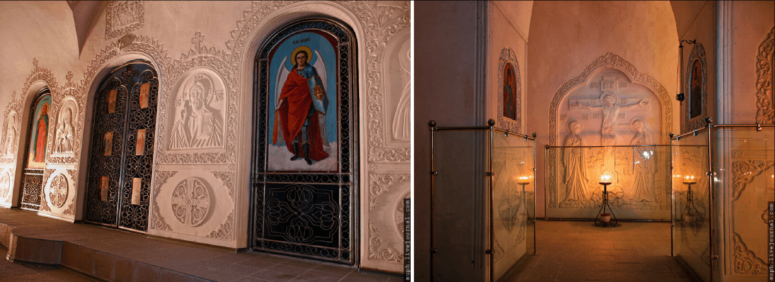
Convent’s other attractions include the chapel of the Crucifixion of the Lord and an unusual confessional known as the Cave of Repentance. It is a long curved corridor with niches for icons. Due to the high humidity, all images here are ceramic.
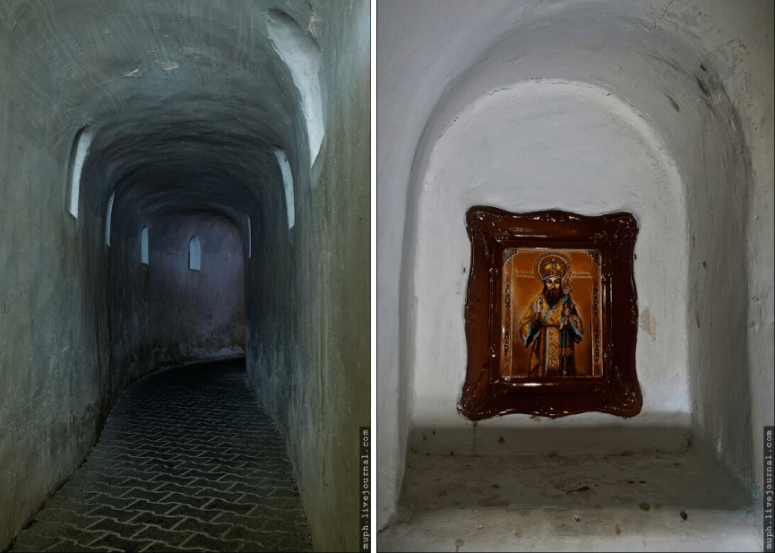
The cave leads to a room for the Sacrament of Confession. It is arranged to physically dispose a sinner to repentance. The ceiling in the direction of travel is getting lower and in the confessional, any adult will have to bow his head.
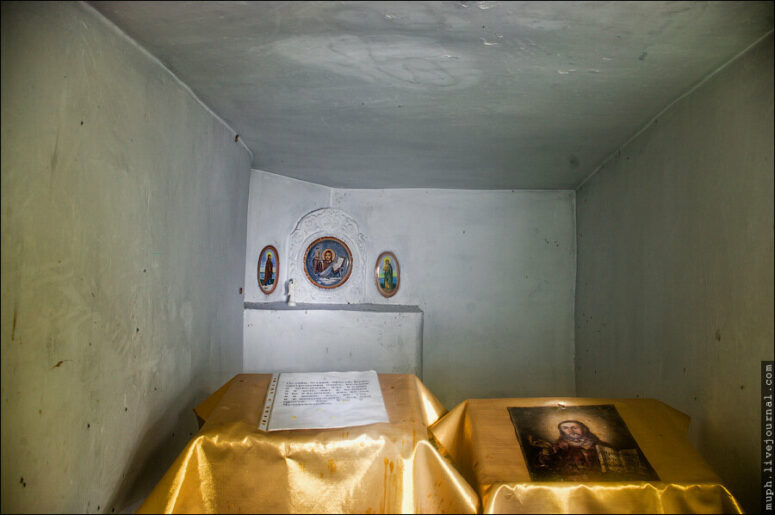
Cave churches are amazing monuments, testifying to the firm faith and unbroken Christian spirit. Their recent revival in Russian lands is especially inspiring. The Kostomarovo caves represent the desire of the Christian heart to break away from the hustle and bustle of everyday life and an attempt to embrace that zealous and inmost love for Christ that the ancient ascetics had. It would be good for us, having such an example before our eyes, to turn our hearts to the Lord, making them “a continuation” of His Church.
The article uses copyright photos from https://muph.livejournal.com/316436.html

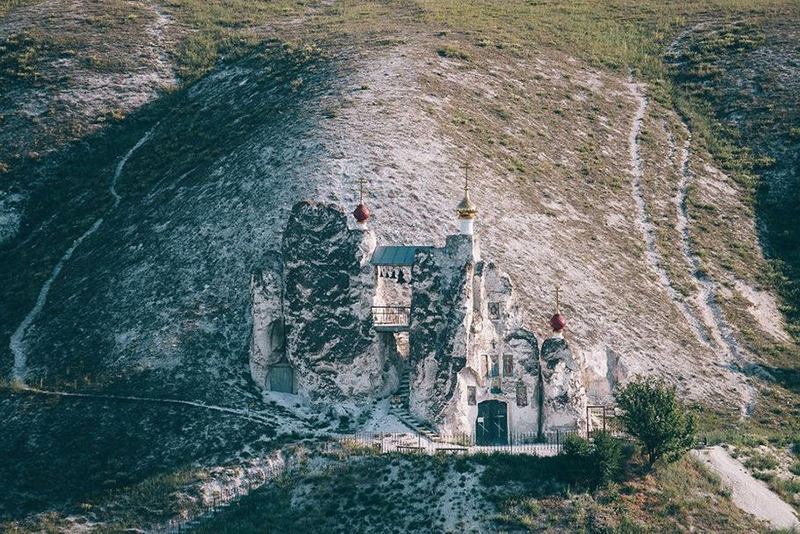

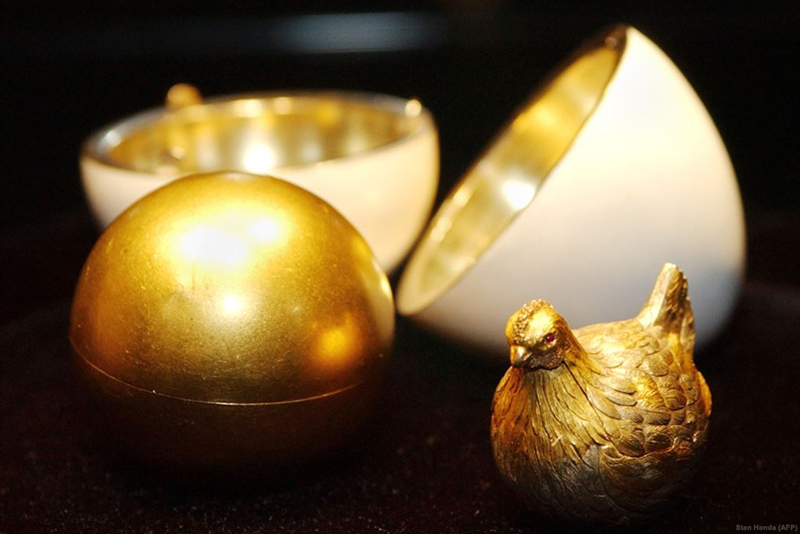

I enjoyed this article very much! Thank you for sharing!!
Glory to Jesus Christ!
Glory forever!!☦️📿